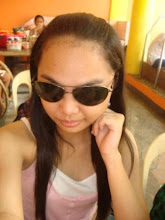
gianlorenzo bernini
The Baroque style began as somewhat of a continuation of the Renaissance. Later, however, scholars of the time began to see the drastic differences between the two styles as the Renaissance style gave way to Baroque art. Baroque architecture, sculpture, and painting of a dramatic nature were powerful tools in the hands of religious and secular absolutism, and flourished in the service of the Catholic Church and of Catholic monarchies.[1] The Baroque artists were particularly focused on natural forms, spaces, colors, lights, and the relationship between the observer and the literary or portrait subject in order to produce a strong, if muted, emotional experience.
The Council of Trent (1545-63), in which the Roman Catholic Church answered many questions of internal reform raised by both Protestants and by those who had remained inside the Catholic Church, addressed the representational arts by demanding that paintings and sculptures in church contexts should speak to the illiterate rather than to the well-informed.
The Council of Trent (1545-63), in which the Roman Catholic Church answered many questions of internal reform raised by both Protestants and by those who had remained inside the Catholic Church, addressed the representational arts by demanding that paintings and sculptures in church contexts should speak to the illiterate rather than to the well-informed.
Characteristics of Baroque painting
Baroque art is characterized by great drama, rich color, and intense light and dark shadows
Baroque art is characterized by great drama, rich color, and intense light and dark shadows
Baroque art was meant to evoke emotion and passion instead of the calm rationality that had been prized during the Renaissance.
Architecture
Characteristics
-long, narrow naves are replaced by broader, occasionally circular forms
-dramatic use of light, either strong light-and-shade contrasts, chiaroscuro effects (e.g., church of Weltenburg Abbey), or uniform lighting by means of several windows (e.g. church of Weingarten Abbey)
-opulent use of ornaments (puttos made of wood (often gilded), plaster or stucco, marble or faux finishing)
-large-scale ceiling frescoes
-the external facade is often characterized by a dramatic central projection
the interior is often no more than a shell for painting and sculpture (especially in the late baroque)
illusory effects like trompe l'oeil and the blending of painting and architecture
in the Bavarian, Czech lands, Poland, and Ukrainian baroque, pear domes are ubiquitous
-long, narrow naves are replaced by broader, occasionally circular forms
-dramatic use of light, either strong light-and-shade contrasts, chiaroscuro effects (e.g., church of Weltenburg Abbey), or uniform lighting by means of several windows (e.g. church of Weingarten Abbey)
-opulent use of ornaments (puttos made of wood (often gilded), plaster or stucco, marble or faux finishing)
-large-scale ceiling frescoes
-the external facade is often characterized by a dramatic central projection
the interior is often no more than a shell for painting and sculpture (especially in the late baroque)
illusory effects like trompe l'oeil and the blending of painting and architecture
in the Bavarian, Czech lands, Poland, and Ukrainian baroque, pear domes are ubiquitous
Artists that best represent the baroque period
1.Gian Lorenzo Bernini-Giovanni Lorenzo Bernini (December 7, 1598 – November 28, 1680) was a pre-eminent Baroque sculptor and architect of 17th Century Rome.
2.Caravaggio-Michelangelo Merisi da Caravaggio (September 28, 1573 – July 18, 1610), usually called simply Caravaggio after his hometown near Milan, was an Italian Baroque painter, whose large religious works portrayed saints and other biblical figures as ordinary people.
3.Peter Paul Rubens
4.Rembrandt van Rijn
